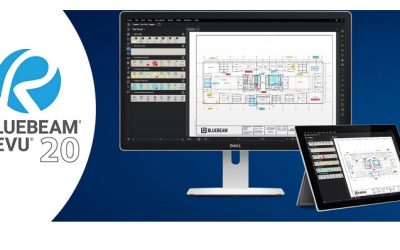Executive summary. Whether bidding a job together in one shared document, or running comparison estimates, the setup in a joint venture effort is critical to success. Consider establishing the following before starting your estimating effort. And, be consistent. Be consistent.
Why setup is so critical. There’s nothing more important in a structure than its foundation. Just ask the residents of the Millennium Tower in San Francisco. It’s the same for an estimate – if the base data and estimating instructions are not clear and thorough for both parties, there’s bound to be conflicting data causing flawed and protracted analysis.
The software. You’re certainly estimating within a computer system, whether it’s spreadsheets or a canned program. Is it the same system as your partner’s? This can make a huge difference. It’s important when it comes down to comparing manhours, crew usage, subcontractor selection, insurance, fee, and many more items. It’s not necessarily a matter of which system is better, it’s a matter of each party’s ability to extract identical data so apples are always being compared to apples. It also boils down to ease of global changes.

The checklist. The checklist should be generated during a face-to-face meeting between the chief estimators. If at all possible, flush all of this out before touching the estimate. Here’s a proposed hitlist of items in the initial estimate setup meeting:
- Labor rates – define the base rate, the taxes (FICA, FUTA, SUTA), and the fringes (health, training, union stabilization fund, etc). Which fringes are taxable, which come in on an overtime basis? Are general liability and small tools being carried in the labor rate? Are we using apprentices? Where is subsistence?
- Equipment rates – to get started, don’t get so caught up in the derivation of the rates. Do pay attention to consistency in gear choice and the equipment cost components. For example, if Contactor A runs John Deere and the partner runs Caterpillar, pick one. Contractor A has the lead, so if Contractor B wants a D5 dozer too bad, he needs to use a JD 650 dozer. Regarding the rates, agree on them to facilitate the estimate startup. In the case of the dozer in this example, decide the hourly rental rate and the cost of operating expense. Absent anything else, start with Blue Book. The name of the game is consistency, not who’s rates are more accurate. There will be plenty of discussion later on on what rates to use, and these decisions can be made at an executive level.
- Crews – estimating is both an art and a science and usually estimators will want to use their own crews. Let them. For two reasons. The first is resource swap. If Contractor A puts a laborer on the roller and Contractor B puts an operator on the roller, having used the same crew designations will allow a quick global change of this labor type to align the bids. The second reason is confinement of estimate changes. You want Estimator A and Estimator B to use their own crews. Do not mandate that “hey, there are 50 crews set up in the library, pick one and use it – don’t make up your own”. Why? Because if an identical crew was used by two different estimators, and in bid review one of the estimator’s crew compositions was changed, there’s no speedy way to make a global change without affecting the other estimator’s use of the same crew. If each estimator owns his own crews, changes globally within that estimator’s portion of the estimate can be made without damaging another estimator’s work.
- Material plugs – this seems to be such a major item, but it really should be one of the simplest items in estimate setup. The chief estimators should agree on unit prices for concrete, asphalt, formwork, trucking, et cetera. The list is not endless, but agreement on resource codes and unit prices is mandatory in your establishing and apples to apples bid comparison.
- Inefficiency – is this a mega-job? There’s a loss of efficiency in travel time, bureaucracy, safety meetings, plans of the day, drug testing, weather, labor turnover, you name it. Is the estimator handling it within the activity, is it a global adjustment in labor?
- Cost types – labor, permanent material, consumable material, subcontractor, and equipment are likely agreed upon cost codes and will align fine in your comparison. What about other cost types like trucking, other, services, overhead, allowances, and contingency? Align now on cost types so that costs do not have to be moved later.
- Calendars – bid on the same calendar. For example, mass excavation will go on a 6-12’s (six days, twelve hours per day) calendar, the utilities on a 5-10’s, and the electrical on a 4-10s.
- Overtime rules – do employees get time and a half after 8 hours during the week and all day on Saturday? Does it vary between craft types? Do you have shift differentials and bonus hours for 24-hour tunnel driving?
- Construction services – examples include vacuum excavation, concrete pumping, trucking, pipe flushing, and material testing. How are they taxed? Are we doing it in house or subbing it out? You don’t need to know the answer now, you need to be consistent between the parties.
- Hauling and trucking – aggregate delivery, offhaul, and demolition disposal. Are these being priced by the ton, the cubic yard (truck yard or bank yard), or the load? Equipment delivery by lowboy: by the hour or by the piece? Are we doing this in house, or subcontracting these services?
- Specialty filters/tagging – sometimes referred to as “D groups”, this is a system of tagging of bid items to allow compartmentalized review. Often times this is a breakdown, by bid item, of disciplines of work: drainage, water, sewer, excavation, electrical, structures, maintenance of traffic, et cetera. Other groupings to facilitate effective filtering for the estimating process and the review process include: contractor, estimator, shift (day or night), phase of work, state, season, regulating agency, and base bid/alternate bid.
- Mirrors – each contractor should have a certain person assigned to each discipline of the estimate. If Joe is handling drainage for Company A, who is handling drainage for Company B? Who is Joe’s mirror, or counterpart, to shake out any discrepancies during the estimate? Name these people and provide a complete contact list.
- Escalation – is this being handled within the bid or “below the line” in a lump sum fashion. And what are the rates to be used? This involves all cost types.
- Minority analysis – what are the participation requirements? Are we accomplishing it through one subcontractor or supplier, or are we amassing it through use of several partners?
- Insurances – auto, general liability, railroad, marine, professional liability, umbrella, workers’ compensation are all considerations. The JV is likely getting a policy – as a company, or project specific? Is this an OCIP?
This list goes on and on, but this is a great start.

My story. I’m a contract trainer for HCSS’ HeavyBid estimating software. I’ve trained a joint venture on the project on change order pricing, provided new estimator training for a multi-billion dollar international contractor involved in a lot of JVs, implemented a European contractor in HeavyBid to allow project partnership with an American company, and been a member of the estimate team on a large joint venture pursuit. The items above are the top items that came to mind from my experiences as I flew over the Pacific Ocean today.
Regarding using the same software, I once arrived on site to be the project manager and was tasked with creating the budget. I’m not even embellishing for this article – I was actually handed a cardboard box of four estimates done on green ledger paper, Timberline, HCSS HeavyBid, and Excel. These four estimates, combined, comprised the treatment plant budget. I had to combine this data into one cohesive budget. Talk about wanting to swallow a bullet. In the instant case discussed above, I could see how different contractors in different systems would make the comparison of estimates frustrating, to put it mildly. Frankly, it ought to be a non-starter if the job is a big one. It’s a huge risk to have limited transparency like this.
If possible, use the same software. As a chief estimator, be authoritative and clear. As an estimator, be consistent. When it’s time to go into the “big room” with the executives, changes can be swift and surgical if the foundation of your estimate is solid!
Work safe!






0 Comments